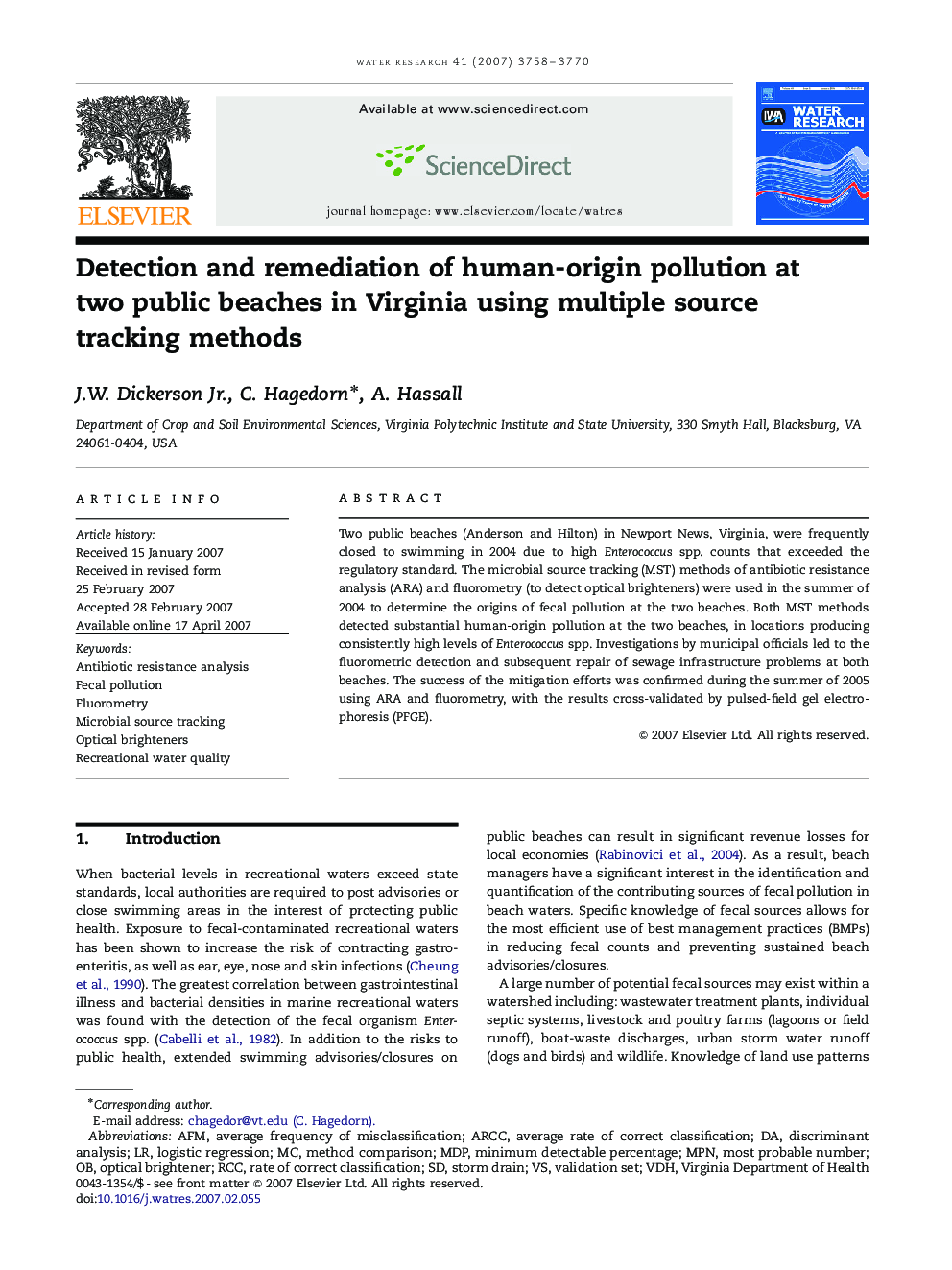| Article ID | Journal | Published Year | Pages | File Type |
|---|---|---|---|---|
| 4486216 | Water Research | 2007 | 13 Pages |
Two public beaches (Anderson and Hilton) in Newport News, Virginia, were frequently closed to swimming in 2004 due to high Enterococcus spp. counts that exceeded the regulatory standard. The microbial source tracking (MST) methods of antibiotic resistance analysis (ARA) and fluorometry (to detect optical brighteners) were used in the summer of 2004 to determine the origins of fecal pollution at the two beaches. Both MST methods detected substantial human-origin pollution at the two beaches, in locations producing consistently high levels of Enterococcus spp. Investigations by municipal officials led to the fluorometric detection and subsequent repair of sewage infrastructure problems at both beaches. The success of the mitigation efforts was confirmed during the summer of 2005 using ARA and fluorometry, with the results cross-validated by pulsed-field gel electrophoresis (PFGE).
